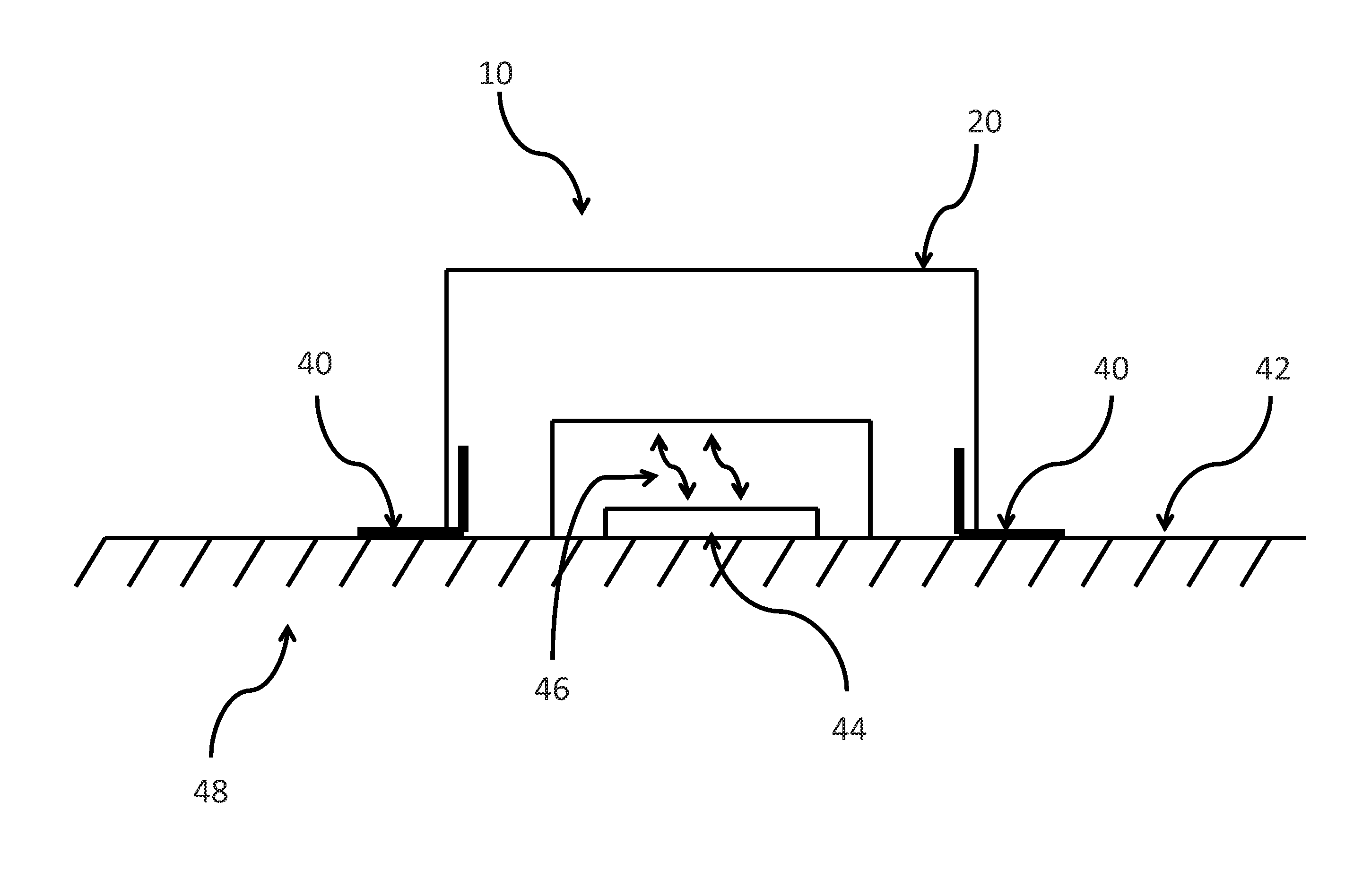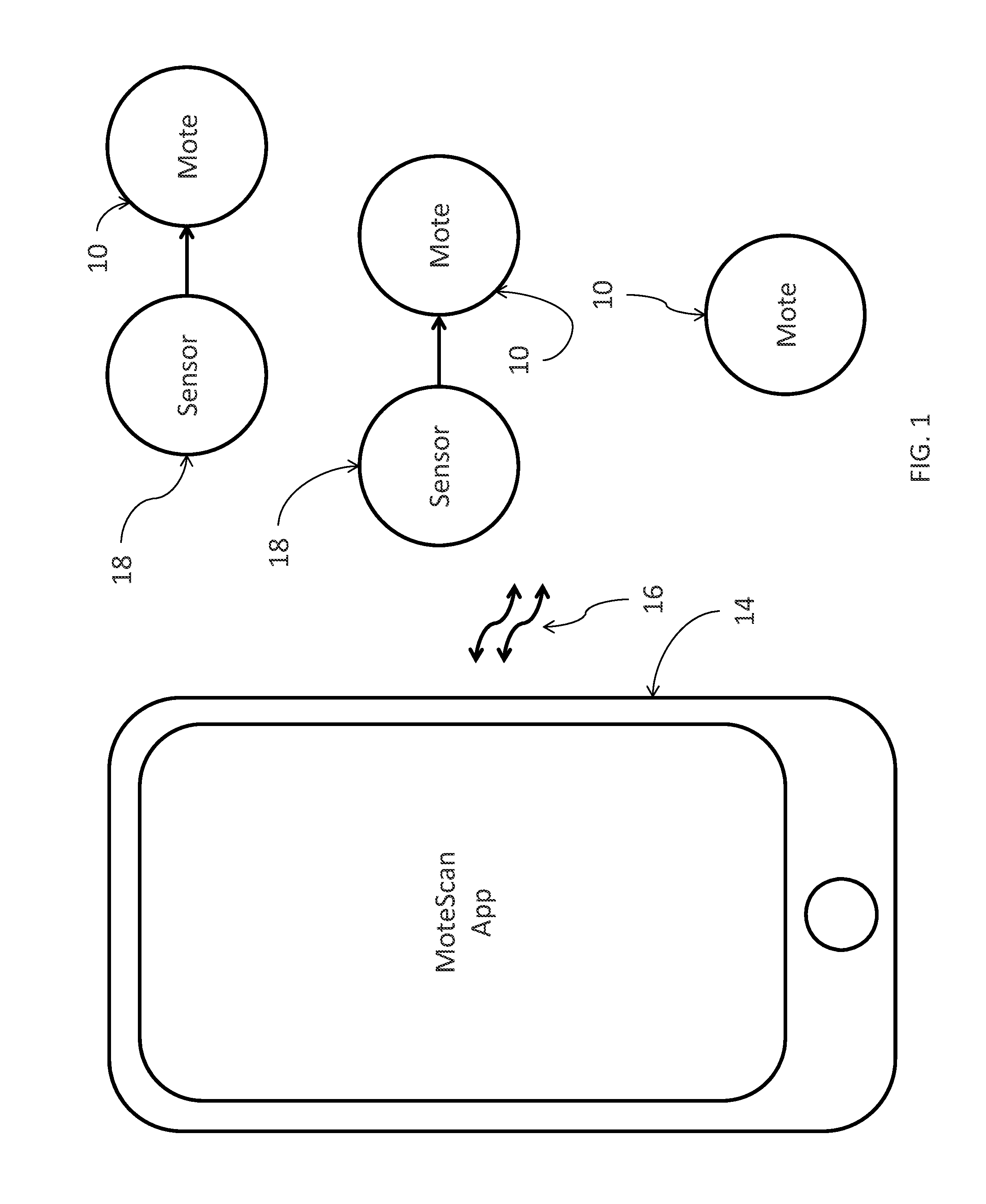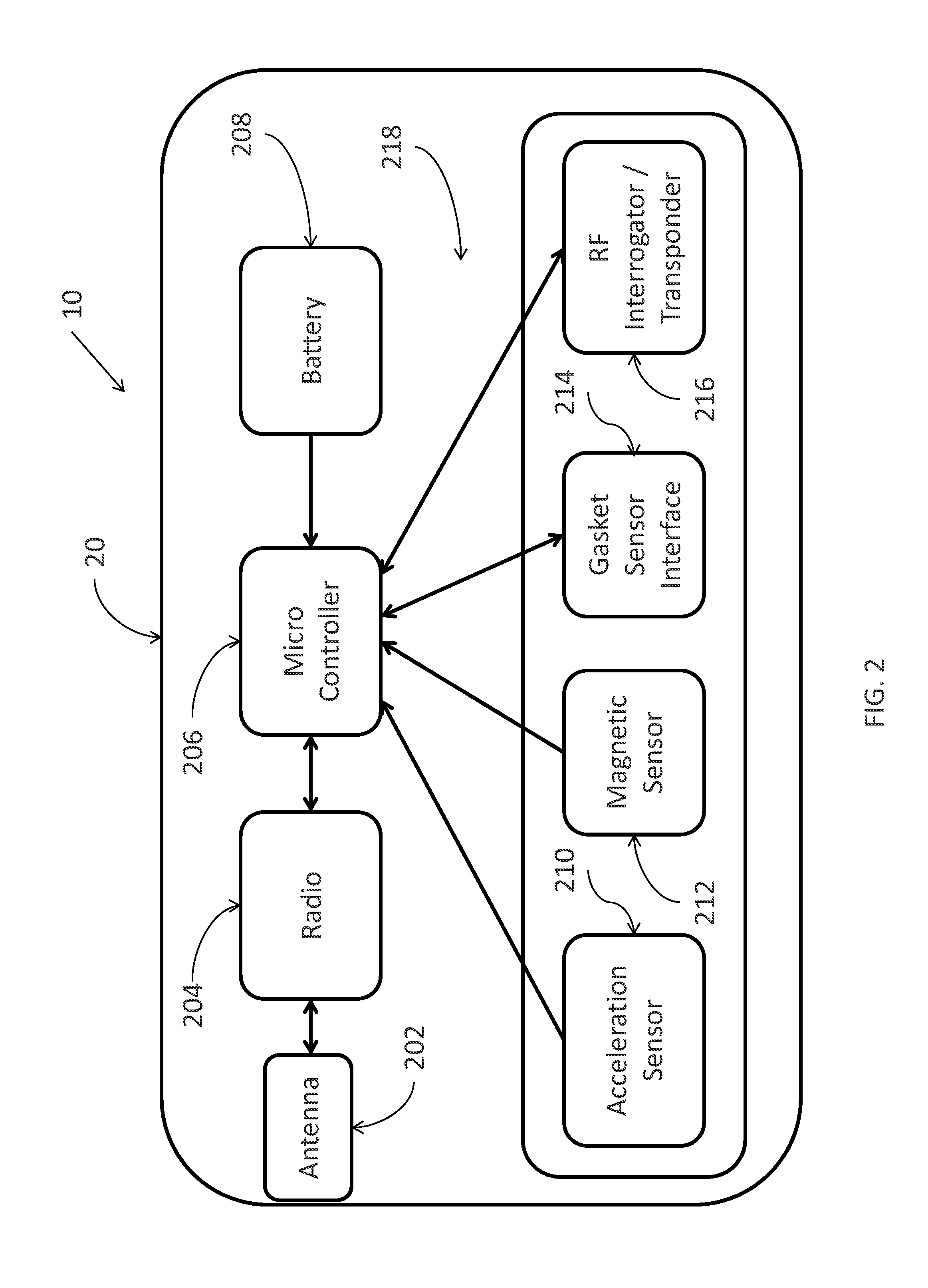Containment integrity sensor device
a sensor device and integrity technology, applied in the direction of instruments, structural/machine measurement, material strength using tensile/compressive forces, etc., can solve the problems of non-uniform material, important production loss factor, and error in compression or torque load measurement, etc., to improve the sensitivity and other characteristics of the sensor.
- Summary
- Abstract
- Description
- Claims
- Application Information
AI Technical Summary
Benefits of technology
Problems solved by technology
Method used
Image
Examples
example 1
[0170]A pipeline integrity sensor was designed for monitoring the structural integrity of oil and slurry pipelines. In this example, the pipe wall thickness was monitored at critical locations. A Slurry Flow Loop (SFL) test facility was used for testing the pipeline integrity sensors.
[0171]Wear sensors were used for the pipe thickness measurement. The sensors were installed to critical locations on an 8″ diameter carbon steel test spool at the SFL. The data was collected using wireless sensing devices provided by Scanimetrics Inc. For assessment of the specific sensors results were compared using standard methods, such as ultrasonic thickness measurement and calipers to measure parameters for validation of the wireless sensor outputs.
[0172]An initial site survey was performed to verify cellular connectivity at the SFL. The installation of the pipeline integrity sensors included 6 wear sensors for the pipe thickness measurement, 8 stud tension sensors and 8 flange gap sensors for pip...
example 2
[0175]Pipeline integrity sensors were designed for monitoring the structural integrity of oil and slurry pipelines. In this example the flange integrity was monitored at critical locations. A Pilot-Scale Slurry Flow Loop (SFL) facility was used for testing the pipeline integrity sensors.
[0176]Wear sensors were used for the pipe thickness measurement. The sensors were installed at critical locations on an 8″ diameter carbon steel test spool at the SFL facility. The data was collected using wireless sensing devices from Scanimetrics Inc. For assessment of the specific sensors, the results were compared using standard methods, such as digital torque gages and calipers, and ultrasonic tension measurement were used to manually measure parameters for validation of the wireless sensor outputs.
Pilot Integrity Sensor
example 3
[0177]Pipeline integrity sensors were used for monitoring the structural integrity of oil and slurry pipelines. In this example, pipe wall thickness of a multi layer pipe was monitored, such as a Chromium Carbide Overlay pipe, Urethane Lined pipe, Rubber pipe and Rubber Lined pipe. In each case the sensor probe length was designed such that the distal end of the probe aligned with the wear surface at the time the sensor was installed.
[0178]Alternatively, the length of the probe could have been designed such that the distal end of the probe extended beyond the wear surface providing an way to calibrate the sensor for relative position due to insertion position errors, thread errors, etc. In another embodiment, the length of the probe could have been designed such that the distal end of the probe remained below the wear surface by 0.5 mm, 1.0 mm, 1.5 mm, 2.0 mm or more. Such a configuration would not actuate until the wear reached the distal end of the probe as described earlier.
[0179...
PUM
 Login to view more
Login to view more Abstract
Description
Claims
Application Information
 Login to view more
Login to view more - R&D Engineer
- R&D Manager
- IP Professional
- Industry Leading Data Capabilities
- Powerful AI technology
- Patent DNA Extraction
Browse by: Latest US Patents, China's latest patents, Technical Efficacy Thesaurus, Application Domain, Technology Topic.
© 2024 PatSnap. All rights reserved.Legal|Privacy policy|Modern Slavery Act Transparency Statement|Sitemap



